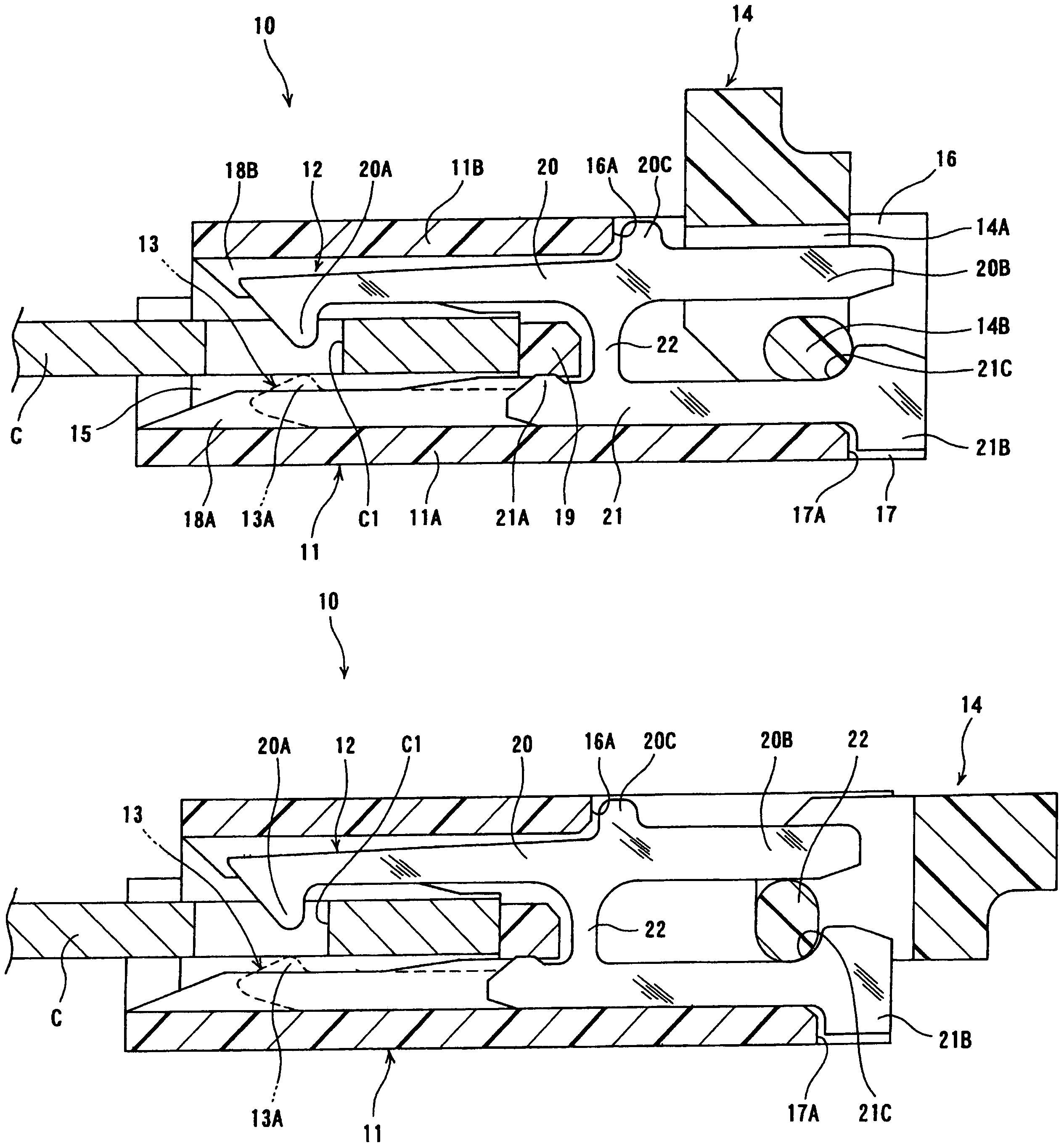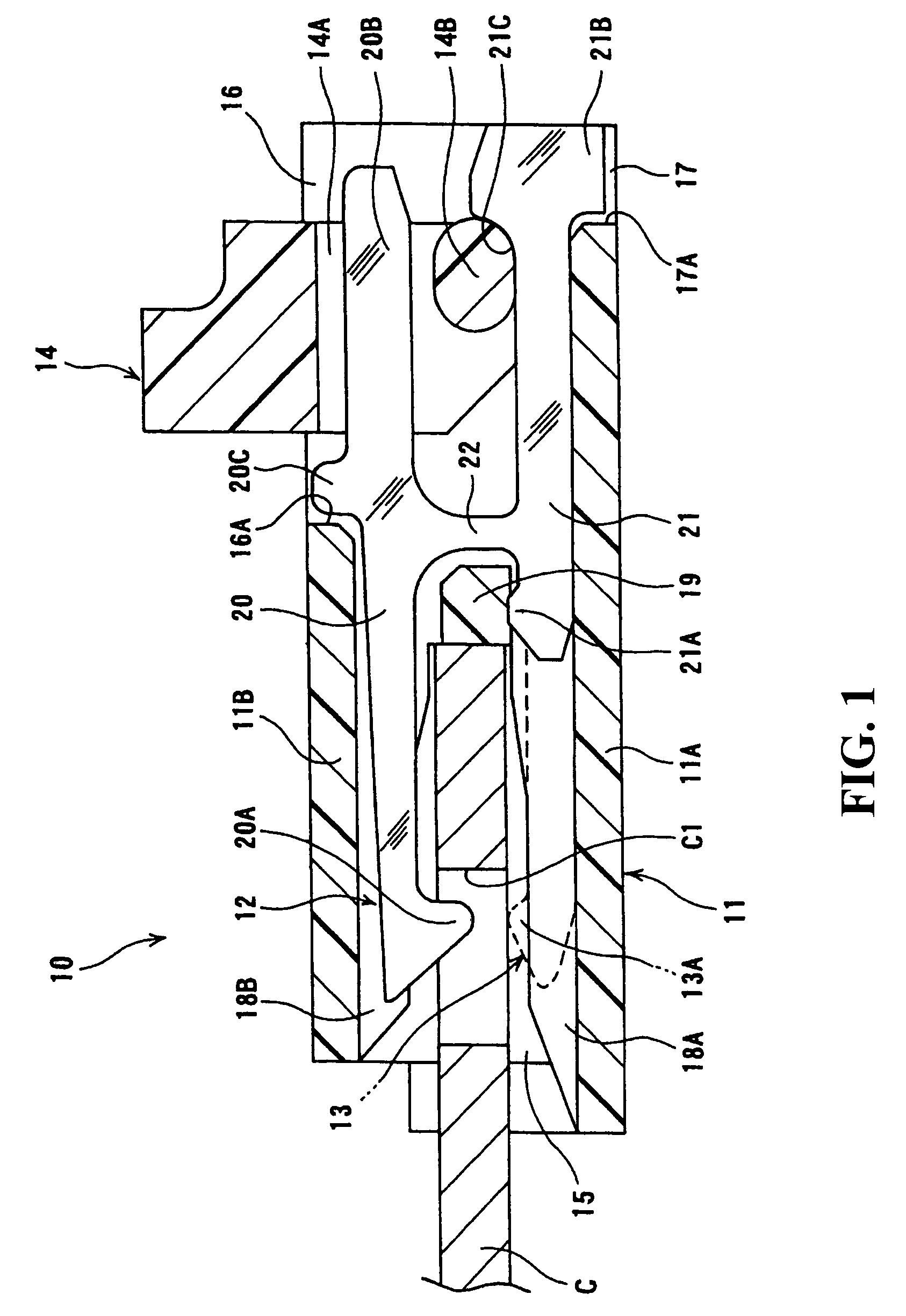Electrical connector for a flat-type cable
a flat-type cable and electric connector technology, applied in the direction of coupling contact members, coupling device connections, coupling parts, etc., to achieve the effect of long shap
- Summary
- Abstract
- Description
- Claims
- Application Information
AI Technical Summary
Benefits of technology
Problems solved by technology
Method used
Image
Examples
Embodiment Construction
[0023]Embodiments of the invention will now be described with reference to the accompanying drawings, FIGS. 1 and 2.
[0024]The electrical connector illustrated in FIG. 1 is mounted on a circuit board, and terminals are connected by soldering to a corresponding circuit unit of the circuit board at their connecting sections. On the other hand, the connector receives a flat-type cable from its opening, and the flat cable is connected with the above-described circuit unit via the terminals. Here, a flat-type cable includes so-called flat cable and flexible circuit board, etc.
[0025]In the connector 10 of FIG. 1, latching metallic pieces 12 and terminals 13 are held in an insulating housing 11 that has an outer shape of generally rectangular parallelpiped. A pressuring member 14 is supported by the latching metallic piece 12 and the terminal 13 so as to be freely rotatable. The housing 11 has a bottom wall 11A, which is arranged contacting with a circuit board by the surface, an upper wall...
PUM
 Login to View More
Login to View More Abstract
Description
Claims
Application Information
 Login to View More
Login to View More - R&D
- Intellectual Property
- Life Sciences
- Materials
- Tech Scout
- Unparalleled Data Quality
- Higher Quality Content
- 60% Fewer Hallucinations
Browse by: Latest US Patents, China's latest patents, Technical Efficacy Thesaurus, Application Domain, Technology Topic, Popular Technical Reports.
© 2025 PatSnap. All rights reserved.Legal|Privacy policy|Modern Slavery Act Transparency Statement|Sitemap|About US| Contact US: help@patsnap.com



